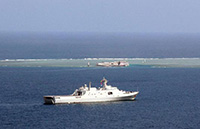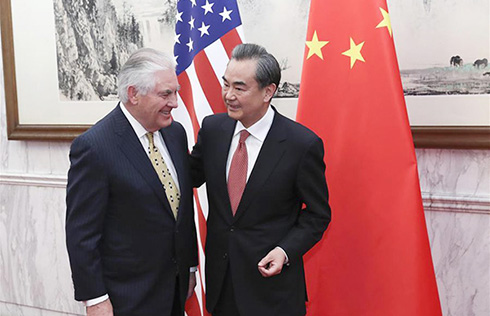DPRK moves medium-range missiles
The Democratic People's Republic of Korea has taken two Musudan missiles off launch-ready status and moved them from the country's east coast, US officials told Reuters on Monday, after weeks of concern that Pyongyang was poised for a test launch.
US Secretary of State John Kerry warned the DPRK last month that it would be a "huge mistake" to fire the medium-range missiles. The prospects of a test had put Seoul, Washington and Tokyo on edge after Pyongyang threatened to attack the Republic of Korea and the United States.
The move to shift the missiles follows a reduction in rhetoric from Pyongyang.
One US official, speaking on condition of anonymity, said the missiles were still mobile and the fact they had been moved was no guarantee they would not be set up elsewhere and fired at some point.
Another US official - Daniel Russel, senior director for Asian affairs at the National Security Council - agreed, saying, "It is premature to celebrate it as good news."
However, a third US official, also speaking on condition of anonymity, said the US did not believe the missiles had gone to an alternate launch site and that they are now believed to be in a non-operational location.
The Musudan missiles have a range of 3,000 to 3,500 kilometers. They have not been tested before.
In Seoul, the ROK's Defense Ministry declined to confirm any movement of the missiles, saying it is still tracking the DPRK's missile activities, and indicating it has yet to conclude Pyongyang has shelved plans for a launch from its east coast.
Heightened tensions
Pentagon spokesman George Little declined to comment on the status of the DPRK missiles.
"I wouldn't again comment on intelligence. But what we have seen recently is a provocation pause. And we think that's obviously beneficial to efforts to ensure we have peace and stability on the Korean Peninsula," Little told reporters.
The heightened tensions, including DPRK threats to attack US bases in the Pacific, coincided with US-ROK military drills that Pyongyang had branded "a rehearsal for invasion". Those drills ended on April 30.
In a rare show of force during the drills, two nuclear-capable, bat-winged B-2 stealth bombers flew more than 37 hours from their US base to drop dummy munitions on an ROK range, and then returned home.
Asked what may have contributed to Pyongyang's latest move, Little noted various possibilities, including the fact that the DPRK's previous cycles of provocation had ended after a period of time. He also noted that the Chinese government has made some helpful statements.
"We have said we'd be able to speak publicly when the North has completely withdrawn" the missiles, ROK Defense Ministry spokesman Kim Min-seok said. The DPRK warned on Tuesday that it will "mercilessly avenge" any breach of its territorial sovereignty by the ROK or the US during their ongoing anti-submarine drills in the Yellow Sea.
The Southwestern Front Command of the Korean People's Army said all units and sub-units of the military in the region will simultaneously start military actions in accordance with operation plans ratified by the supreme command, the official news agency KCNA said.
- DPRK vows to hit back at any ROK-US drills
- DPRK nuke test to top Park-Obama discussions
- US sees DPRK as security threat in Northeast Asia
- US urges DPRK to immediately release sentenced American
- DPRK sentences US citizen to 15-yr hard labor
- US citizen to face 'judgment' in DPRK court
- DPRK rejects ROK call for talks
- Seoul delivers ultimatum to DPRK
- Chinese envoy visits US on DPRK affairs
- China to send DPRK envoy to Washington





















